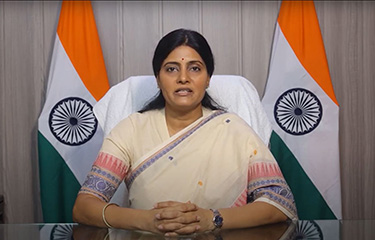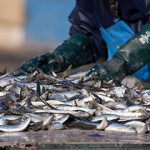India’s government fuels seafood production, exports with investments, support

The government of India, the world’s third-largest fish producer, second-largest aquaculture producer, and fourth-largest seafood exporter, has plans to become an even bigger seafood player.
India's seafood exports have been on an upward trajectory, with a compound annual growth rate (CAGR) of 17.2 percent between 2016 and 2021. Its export value more than doubled to USD 6.68 billion (EUR 6.3 billion) in fiscal year 2020-2021, from USD 2.9 billion (EUR 2.7 billion) in 2010. For the fiscal year 2022 India is expected to reach USD 8 billion (EUR 7.6 billion) in total seafood exports, despite the impact of inflation depressing global demand, harming India’s seafood sector, and forcing the Indian government to lower its previous export target of USD 8.8 billion (EUR 8.3 billion).
At the India International Seafood Show 2023 in Kolkata in mid-February, India Minister of State for Commerce and Industry Anupriya Patel announced an ambitious plan to push the country’s seafood exports beyond USD 14 billion (EUR 13.2 billion) by 2025. In the fiscal year ending 31 March, 2022, the country hit an all-time high in seafood-export value and volume, at USD 7.76 million (EUR 7.3 billion) and 1.36 million metric tons (MT), respectively.
India’s seafood export strategy will focus on the U.S. market, according to Patel.
“We are making moves to regain our seafood market-share in America. The government is moving fast in the right direction,” she said.
Beginning 1 April, the Indian government will allocate USD 271.7 million (EUR 256.5 million) to its Department of Fisheries, a 38.4 percent year-on-year increase. In addition, the fishery sector will also be allocated USD 725 million (EUR 684.4 million) through newly established Pradhan Mantri Matsya Kisan Samridhi Sah-Yojana (PM-MKSSY), a sub-scheme of the Pradhan Mantri Matsya Sampada Yojana (PMMSY) program, which was established in 2020 and has provided USD 2.4 billion (EUR 2.3 billion) to promote sustainable and responsible development of India’s fisheries sector.
Additionally, the Indian government moved to reduce aquafeed import duties, with taxes on for fishmeal and vitamin premixes trimmed from 15 percent to 5 percent and taxes on fish oil and algal prime reduced from 30 percent to 15 percent. And the government has extended its export-promotion scheme, the Remission of Duties and Taxes on Exported Products (RoDTEP), which ensures that exporters receive a refund on some taxes and duties.
India’s seafood promotion programs are also getting a boost through the establishment of a central quarantine facility in Chennai to ensure shrimp shipments from the country are pathogen-free. The country's Marine Products Export Development Authority (MPEDA) research unit, the Rajiv Gandhi Centre for Aquaculture, will also receive funding for a black tiger shrimp Broodstock multiplication center pilot in Visakhapatnam.
Additionally, in conjunction with India’s G-20 this year, it will be organizing a conference aimed at harmonizing regulations for seafood trading in the second half of 2023, a seafood-themed event for ambassadors from the world’s top 20 markets for marine products, and a conference focused on improving trade regulations and export prospects for India’s shrimp industry.
And as a supplement to the importance of its attendance at global seafood trade shows, MPEDA has arranged approximately 40 virtual buyer-seller meetings with key trading partners including Japan, China, Russia, the U.K., Vietnam, Germany, Malaysia, South Korea, Oman, Singapore, and Spain.
Chennai-based aquatech firm Aquaconnect Founder and CEO Rajamanohar Somasundaram said with strategic planning, an increased focus on value-added products, sustainable production, infrastructure and technology investments, and coordination on market access and promotion, India can continue its upward trajectory …
Photo courtesy of Economic Development Board of Maritius




Share